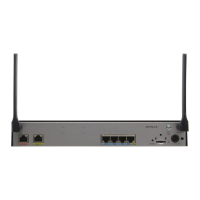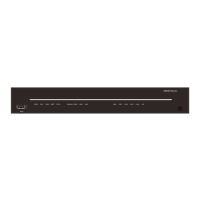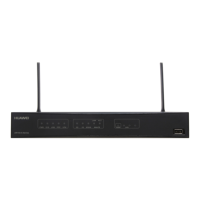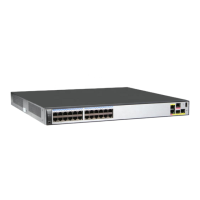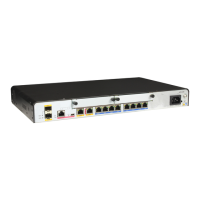[RouterB-Ethernet2/0/1] port mux-vlan enable
[RouterB-Ethernet2/0/1] quit
[RouterB] interface ethernet 2/0/2
[RouterB-Ethernet2/0/2] port link-type access
[RouterB-Ethernet2/0/2] port default vlan 3
[RouterB-Ethernet2/0/2] port mux-vlan enable
[RouterB-Ethernet2/0/2] quit
[RouterB] interface ethernet 2/0/3
[RouterB-Ethernet2/0/3] port link-type access
[RouterB-Ethernet2/0/3] port default vlan 3
[RouterB-Ethernet2/0/3] port mux-vlan enable
[RouterB-Ethernet2/0/3] quit
[RouterB] interface ethernet 2/0/4
[RouterB-Ethernet2/0/4] port link-type access
[RouterB-Ethernet2/0/4] port default vlan 4
[RouterB-Ethernet2/0/4] port mux-vlan enable
[RouterB-Ethernet2/0/4] quit
[RouterB] interface ethernet 2/0/5
[RouterB-Ethernet2/0/5] port link-type access
[RouterB-Ethernet2/0/5] port default vlan 4
[RouterB-Ethernet2/0/5] port mux-vlan enable
[RouterB-Ethernet2/0/5] quit
# Configure Ethernet2/0/6 to allow the principal VLAN and subordinate VLANs to pass through.
[RouterB] interface ethernet 2/0/6
[RouterB-Ethernet2/0/6] port link-type trunk
[RouterB-Ethernet2/0/6] port trunk allow-pass vlan 2 to 4
[RouterB-Ethernet2/0/6] quit
Step 3 Verify the configuration.
All the hosts can access Server A and Server B in the principal VLAN.
Host A, Host B, Host E, and Host F in the group VLAN can communicate with each other.
Host C, Host D, Host G, and Host H in the separate VLAN cannot communicate with each other.
Hosts in the group VLAN cannot communicate with hosts in the separate VLAN.
----End
Configuration Files
Configuration file of RouterA
#
sysname RouterA
#
vlan batch 2 to 4
#
vlan 2
mux-vlan
subordinate group 3
subordinate separate 4
#
interface Ethernet2/0/1
port link-type access
port default vlan 2
port mux-vlan enable
#
interface Ethernet2/0/2
port link-type access
port default vlan 3
port mux-vlan enable
#
interface Ethernet2/0/3
Huawei AR3200 Series Enterprise Routers
Configuration Guide - LAN 3 VLAN Configuration
Issue 02 (2012-03-30) Huawei Proprietary and Confidential
Copyright © Huawei Technologies Co., Ltd.
117

